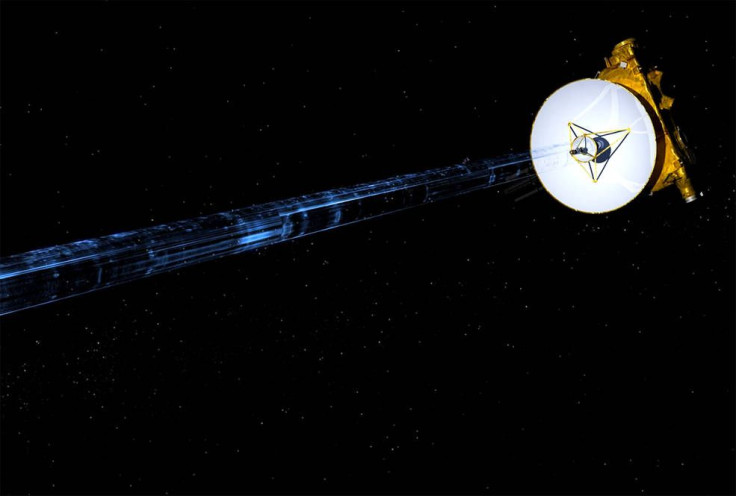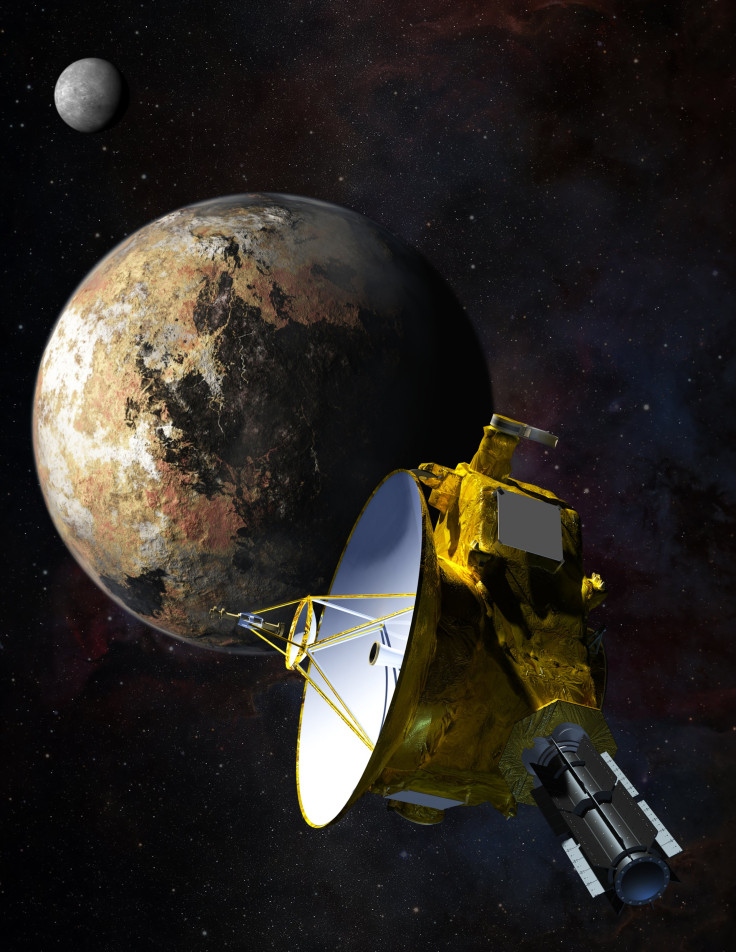NASA New Horizons Mission: Spacecraft Sent Final Pieces Of Pluto Data Before Heading Deeper Into Kuiper Belt

In July 2015, NASA’s New Horizons spacecraft completed a historic flyby of Pluto—a dwarf planet smaller in size than Earth’s moon located more than 3.7 billion miles from the sun. Since then, the spacecraft has stored scientific data from the flyby in its digital recorders and has been transmitting it back to researchers. According to NASA officials, the spacecraft has sent over the last bit of data to the Johns Hopkins Applied Physics Laboratory (APL) in Laurel, Md. as of Tuesday morning.
Located 3.4 billion miles away, the piano-sized spacecraft takes its time to beam signals back to Earth. Consider this: signals moving at the speed of light take 5 hours and 8 minutes to go from the probe to the lab.
"The Pluto system data that New Horizons collected has amazed us over and over again with the beauty and complexity of Pluto and its system of moons," said New Horizons principal investigator Alan Stern in a statement. "There's a great deal of work ahead for us to understand the 400-plus scientific observations that have all been sent to Earth. And that's exactly what we're going to do. After all, who knows when the next data from a spacecraft visiting Pluto will be sent?"

The New Horizons mission launched in Jan. 2006 and took almost 10 years to reach Pluto—the journey was jump started after receiving a speed boost from Jupiter’s gravitational force or else experts anticipate it would have arrived in Pluto’s orbit in 2036. The spacecraft is the first to get a close look at Pluto and was designed to gather as much data as possible from a single flyby.
The spacecraft, powered by a radioisotope thermoelectric generator, managed to acquire 50 gigabits of data during the flyby, where it came within 7,800 miles of the small planet. After sending home the high-priority data, the probe has been sending home data for the past 15 months.
“Because it had only one shot at its target, New Horizons was designed to gather as much data as it could, as quickly as it could – taking about 100 times more data on close approach to Pluto and its moons than it could have sent home before flying onward,” writes NASA. “The spacecraft was programmed to send select, high-priority datasets home in the days just before and after close approach, and began returning the vast amount of remaining stored data in September 2015.”
Right off the bat, the flyby was able to shatter some pre-conceived notions about Pluto. It was previously believed Pluto was the same size as Earth but scientists now know it is two-thirds the diameter of Earth’s moon. Scientists also learned that the planet is composed two-thirds of rock and one-third of ice.
Now, with a complete data set, scientists can continue learning more about the planet.
"We have our pot of gold," mission operations manager Alice Bowman, of APL, said in the same statement.
As for what is next for the spacecraft, once all the Pluto flyby data is guaranteed to be in good form, the team will clear the onboard memory so the probe will have space to record data from its next mission. The spacecraft is currently headed deeper into the Kuiper Belt towards a small object called 2014 MU69, located a billion miles away from Pluto, and is slated to fly by the object in 2019.
© Copyright IBTimes 2024. All rights reserved.






















